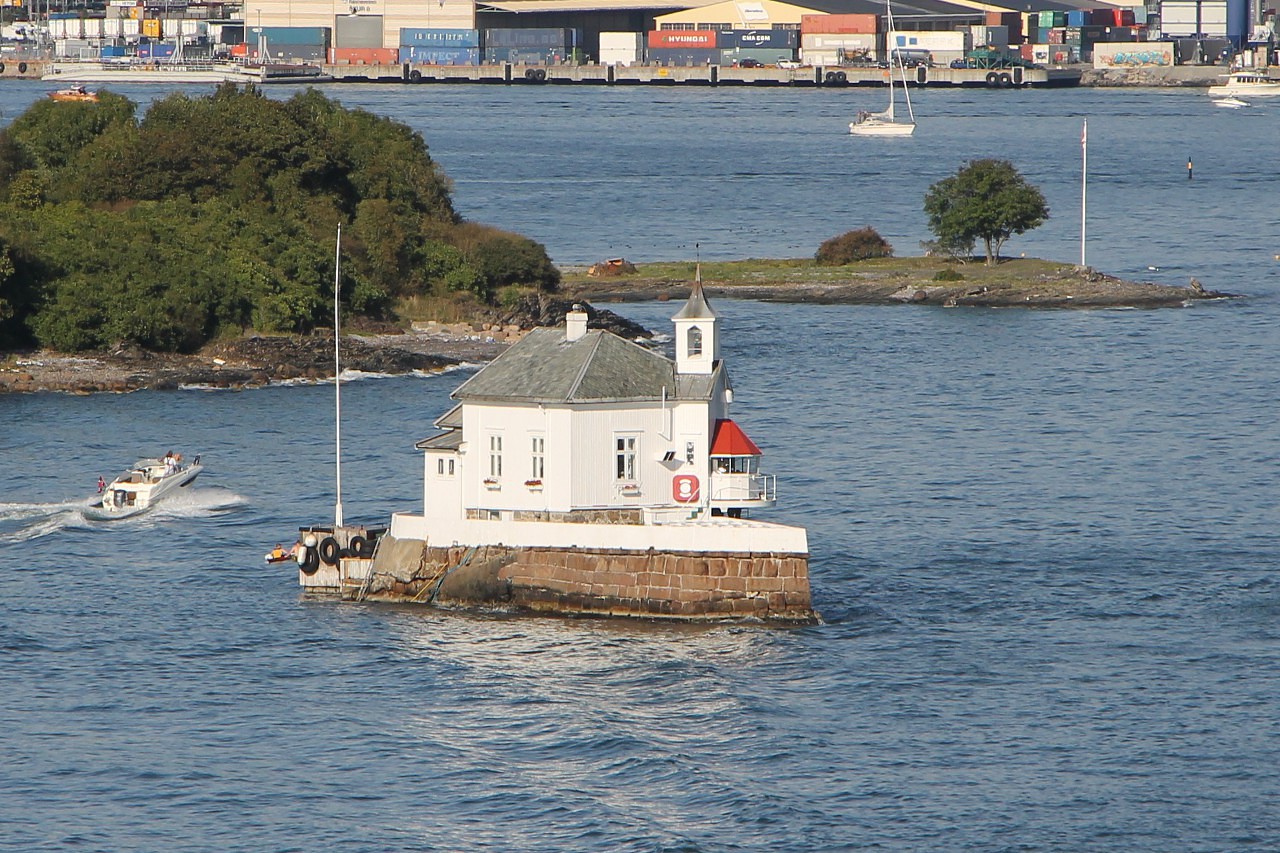Oslo from Board of DFDS Ferry. Pipervika Bay
At 17:00, our ferry left the DFDS terminal and went on a voyage to Copenhagen.

We go around the Vippetangen cape, the southern tip of the Akersnes peninsula. The name of the cape is translated simply as "vippefyr" - lighthouse, "tagen" - cape. There was a lighthouse here, but it was a long time ago. Now on the cape stands an elevator-granary, built in 1905.
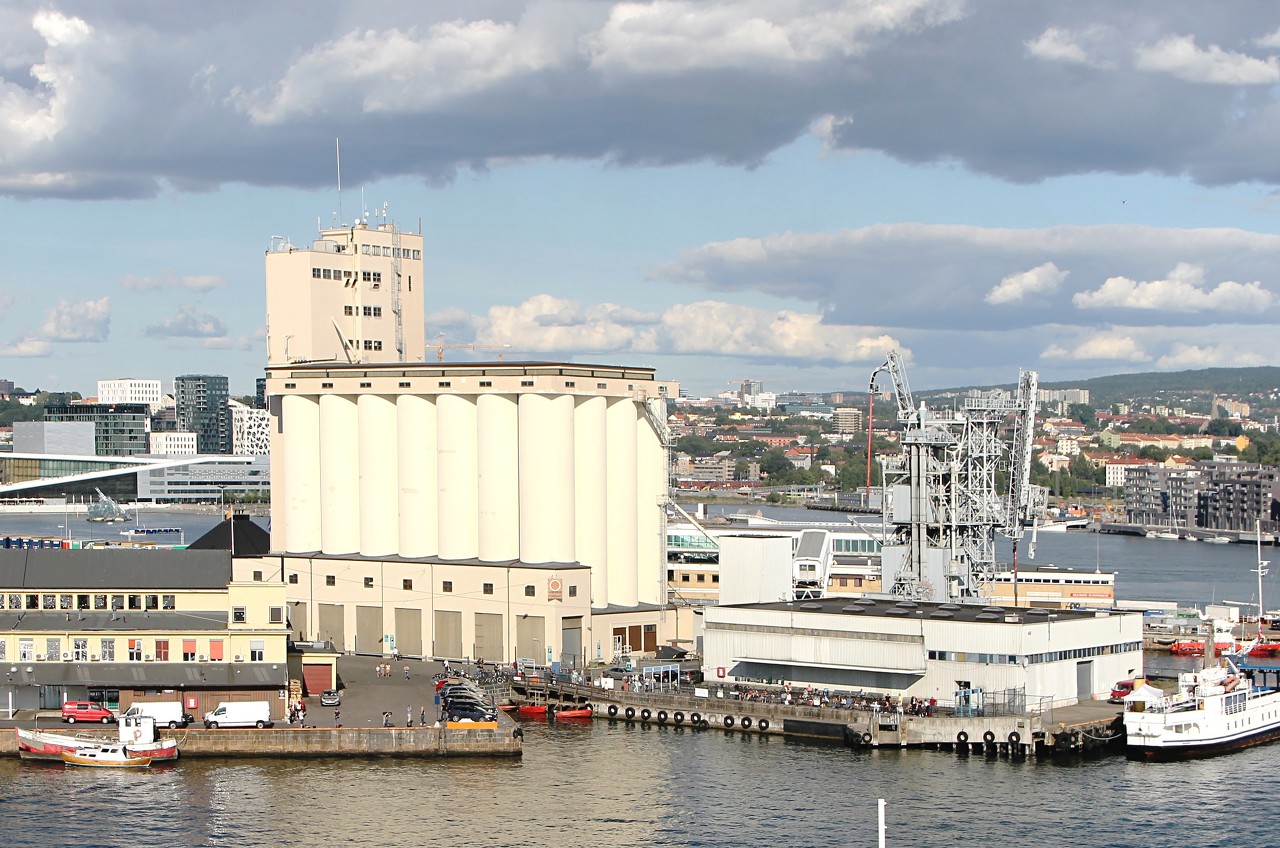
Until the end of the 19th century, there were city and garrison baths on Vippentagen cape. In 1905, there were built berths for fishing and vessels and a complex for processing fish Fiskenhalen ("Fish hall"). Now it processes up to 100 tonns of seafood per day, there is a restaurant where you can taste dishes from freshly caught marine life. The white and red building houses the port authority.
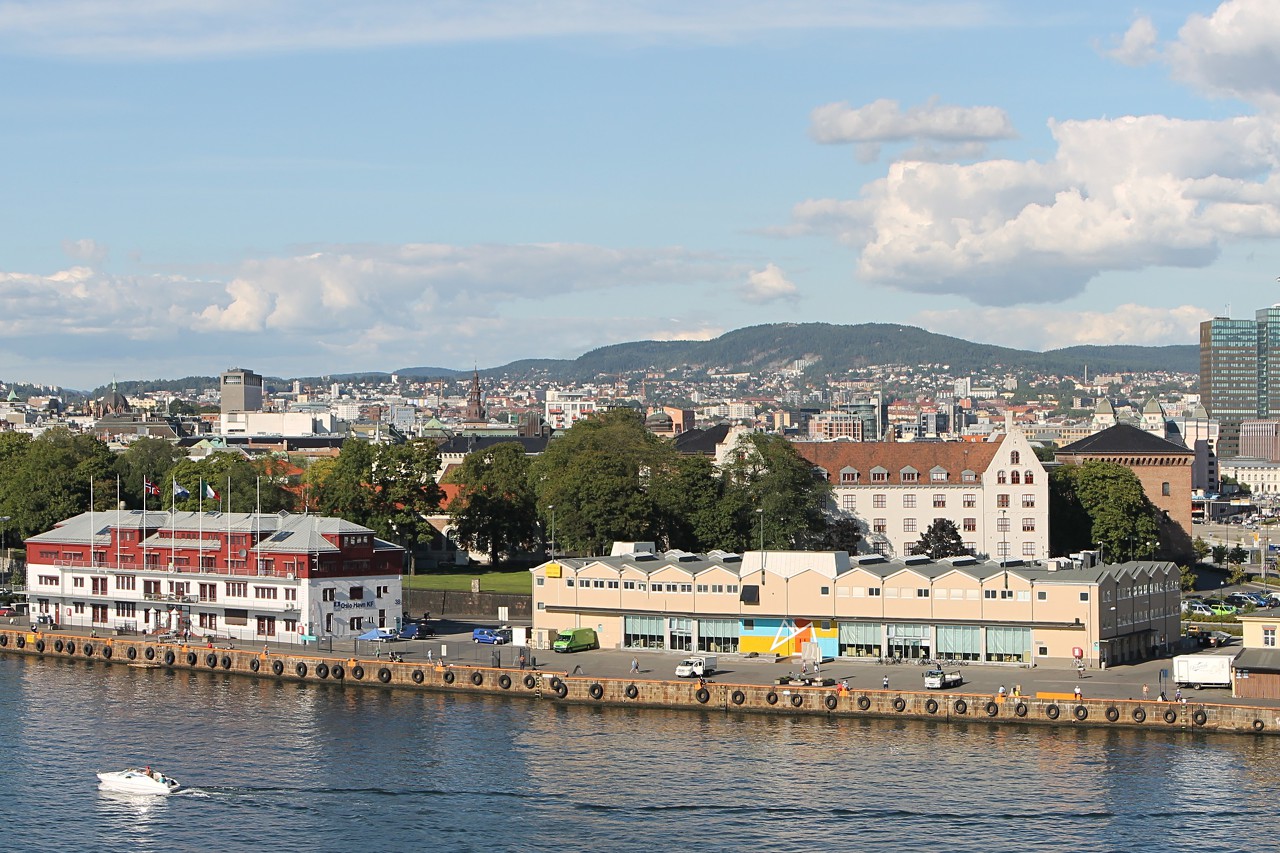
This is how Akershus fortress looks from the height of the tenth deck of the ferry.
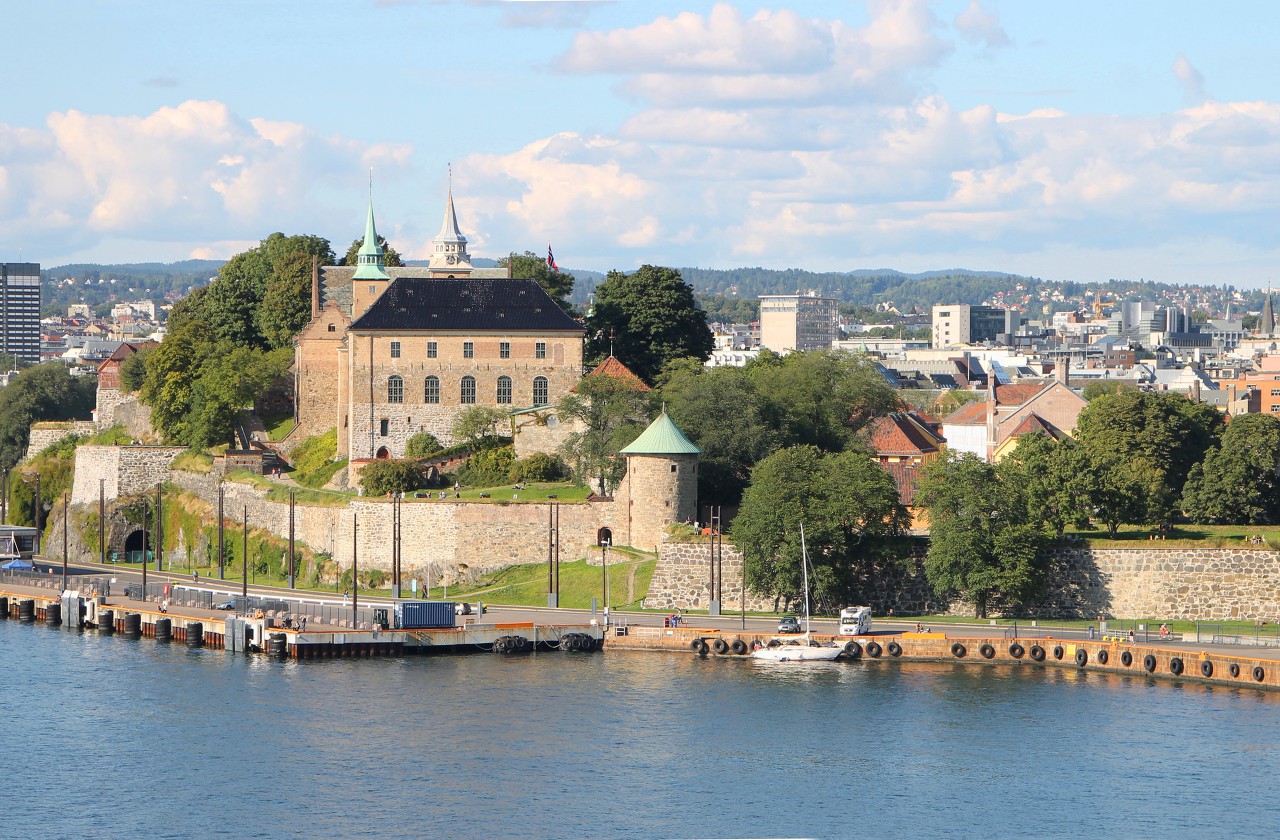
After Akersnes peninsula our eyes opened to the Pipervika gulf, on the banks of which is the central quarters of Oslo.
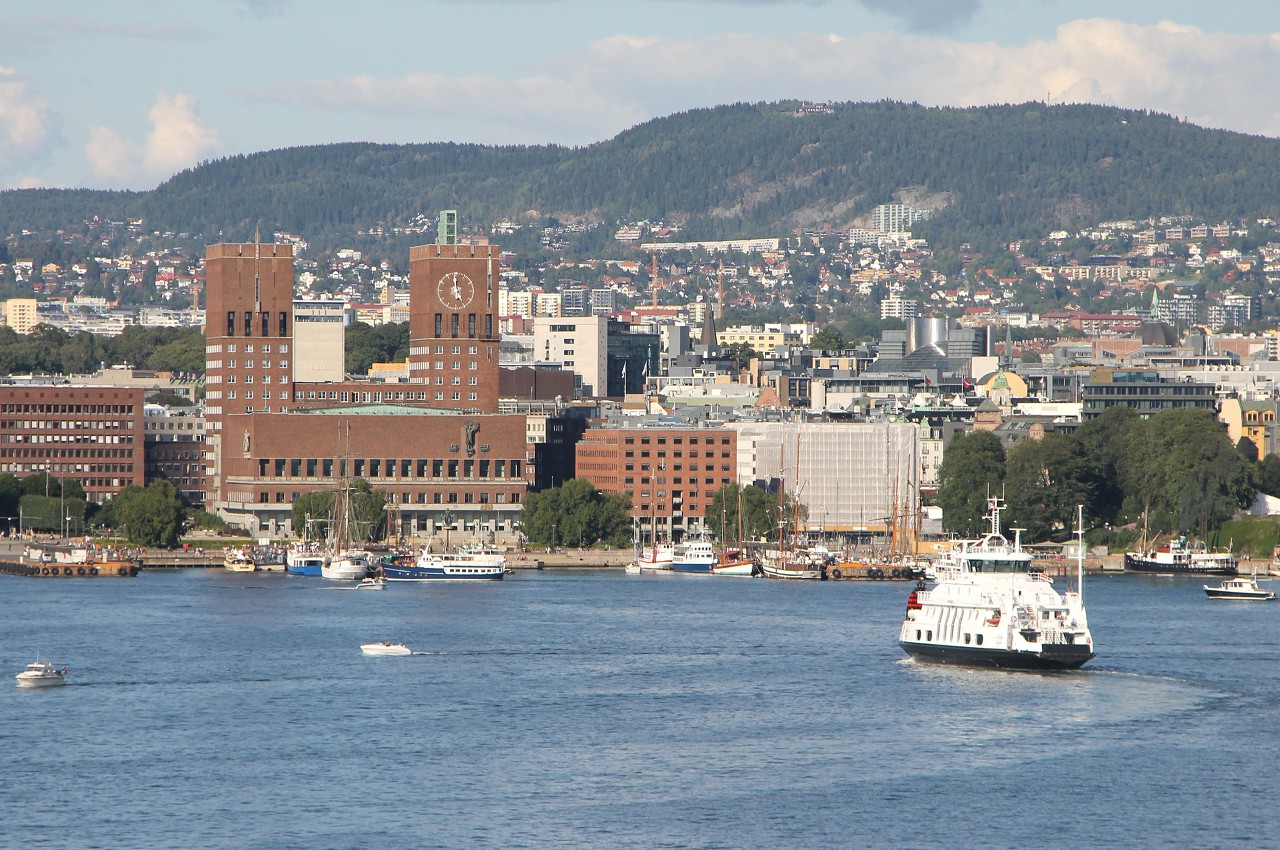
Pipervika ferry docks connect the city center to the museum's peninsula Bygdøy and numerous islands that are also residential areas of Oslo.
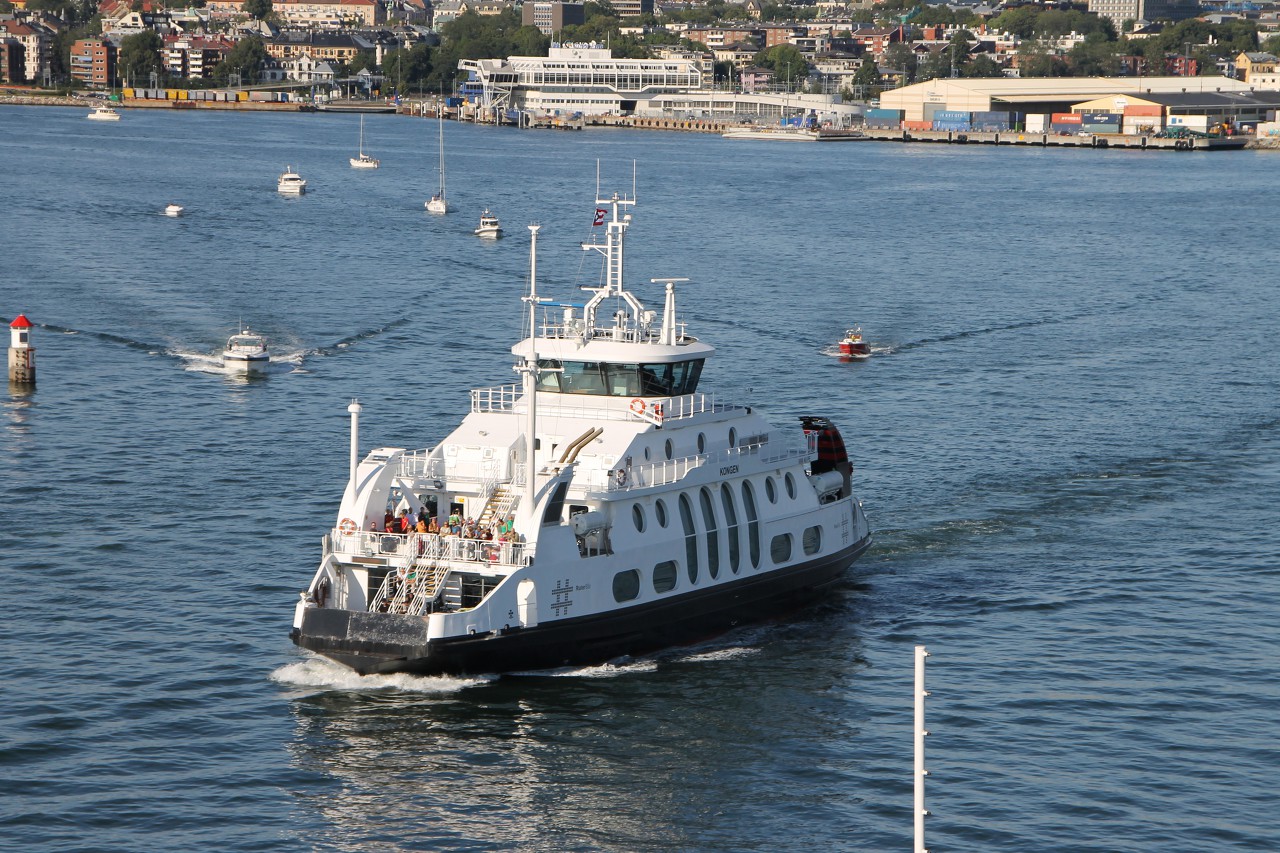
From the deck of the ferry, the City Hall no longer gives the impression of a huge structure, as from Nansen square. Now I am on the same level as the roof of the central building of City Hall.
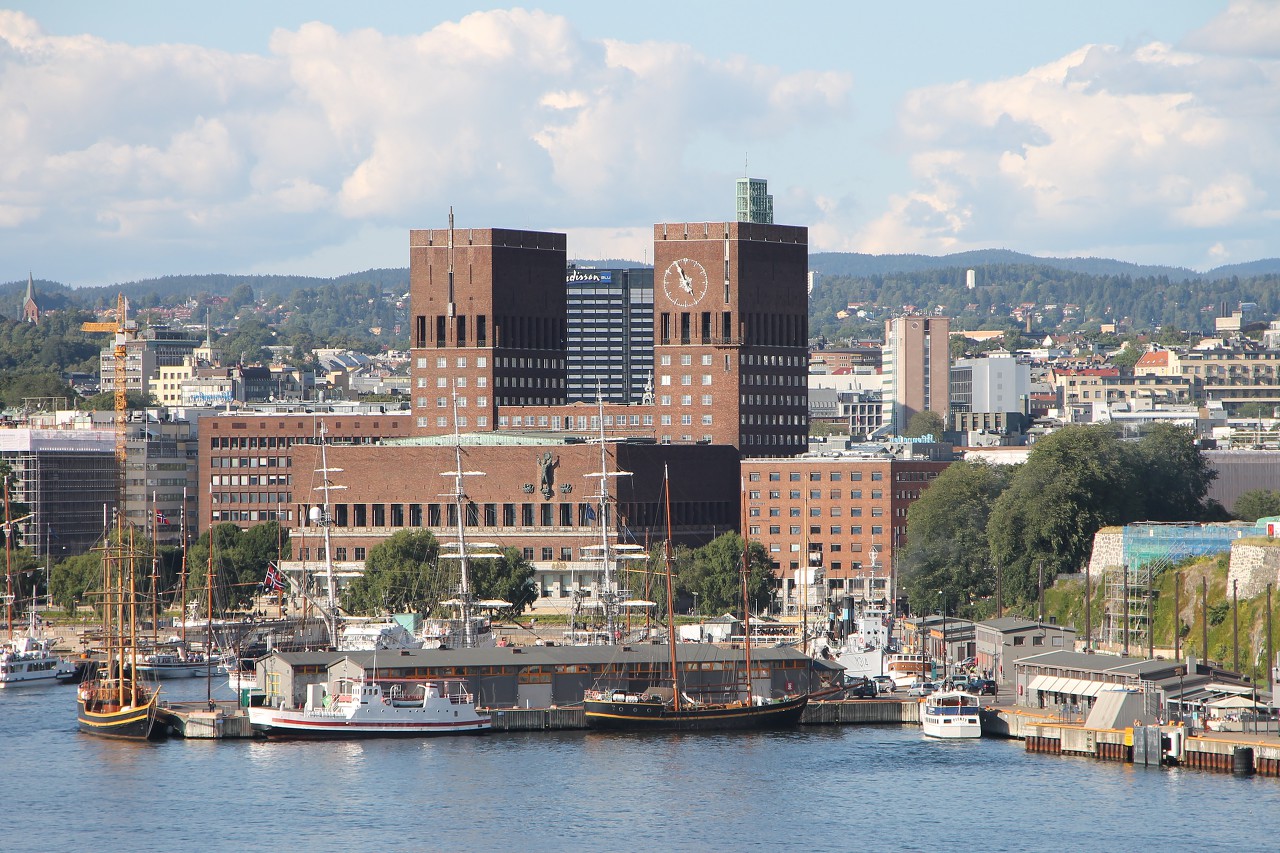
On the western shore of the bay, in the Tjuvholmen district, you can see the huge roof of the futuristic building of the Astrup Fearnley Museum of Modern Art. The unique building is made of wood, has a glass roof and is divided into two parts by a channel. The author of the project is the architect Renzo Piano. The Museum was established in 1993 on the basis of the collection of shipbuilder and patron Hans Rasmus Astrup, which includes works of both recognized classics of modern art (Andy Warhol, Cindy Sherman, Matthew Barney) and relatively young artists (Nate Lowman, Frank Benson, etc.). The New building was opened on September 29, 2012. In addition to the permanent exhibition the Museum organizes temporary exhibitions.
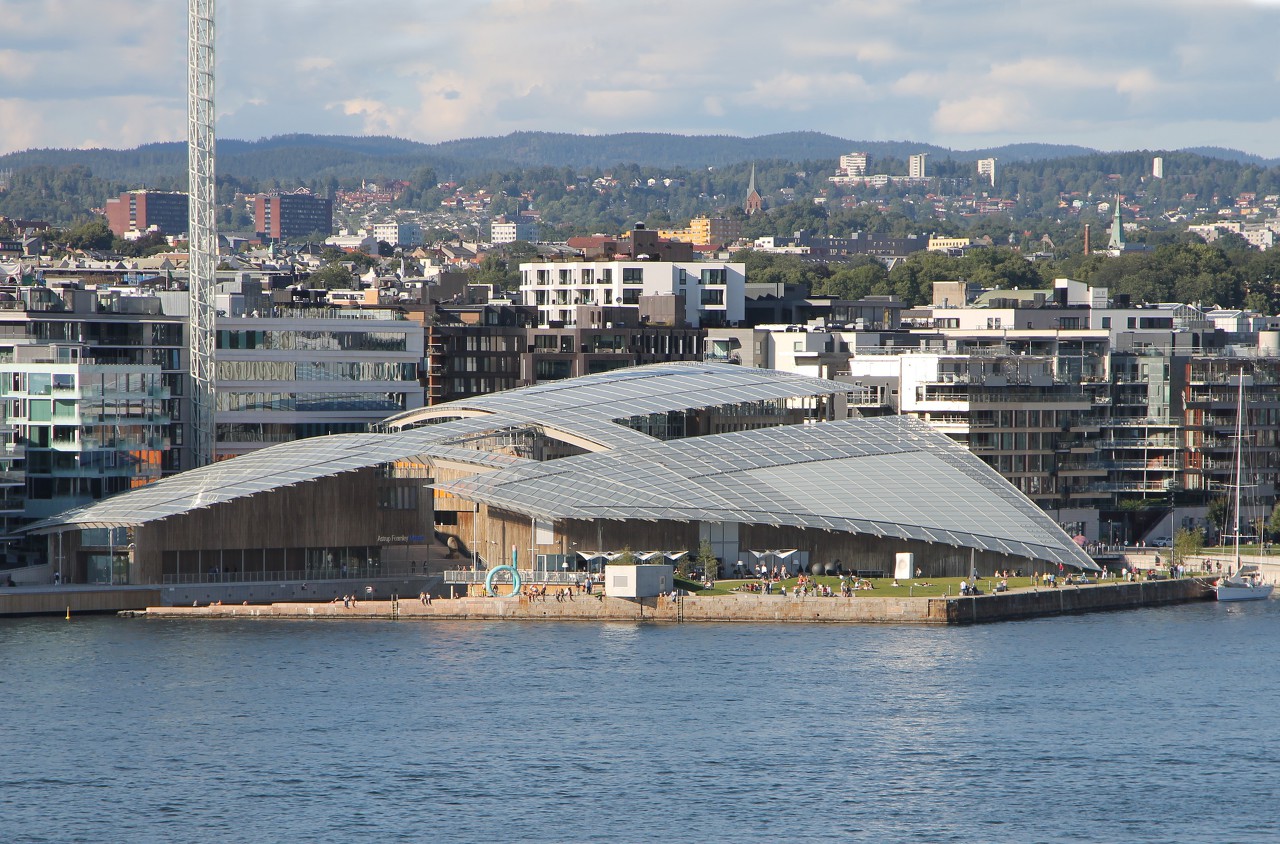
The Kavringen fyr lighthouse was built in 1892 on an underwater rock at a depth of 3.25 meters. The concrete base is faced with granite, the tower is built of wood and sheathed with copper sheets. The height of the tower with a weather vane is 19 meters, the light source is located at a height of 11.7 meters. Initially, an oil lamp was used, in 1932 it was replaced by an electric one, and since 1956 the lighthouse has been operating in automatic mode. By the centenary of the building, the lighthouse was completely renovated, the old cladding was replaced with galvanized sheets with synthetic coating. In 2000, in the foundation of the lighthouse was laid with a titanium "time capsule", where the letters of Norwegians to future generations are placed. The capsule is supposed to be opened in 3000.

The Holmenkollen area is located on a hill to the north from the city center and is the highest point of Oslo. There is a ski jump, the world's oldest Ski Museum, and a biathlon track.
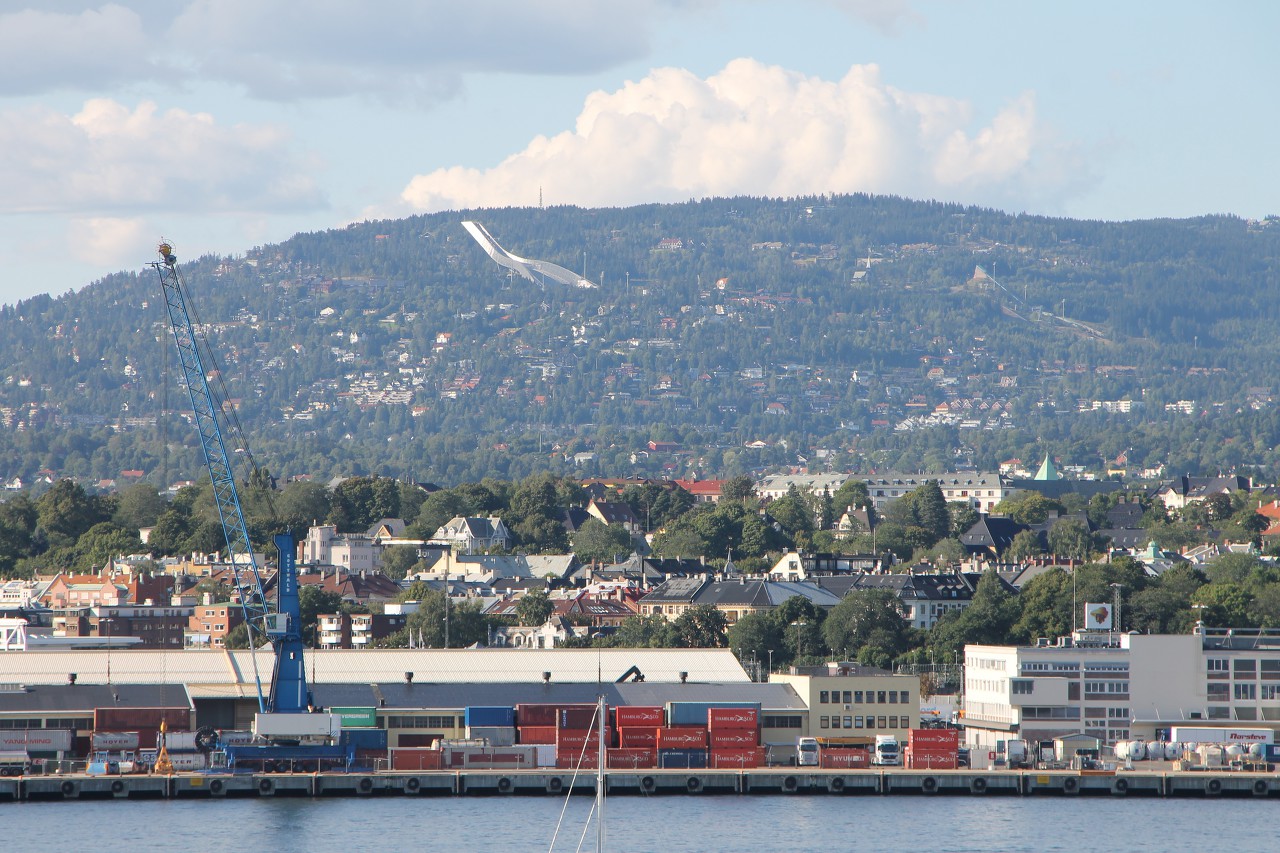
On the right side of the ship we see the green area Frogner. At the mouth of The frognerkilen bay, the white modern structures of the Color Line terminal are visible. Where the Oslo-Kiel ferries moored.
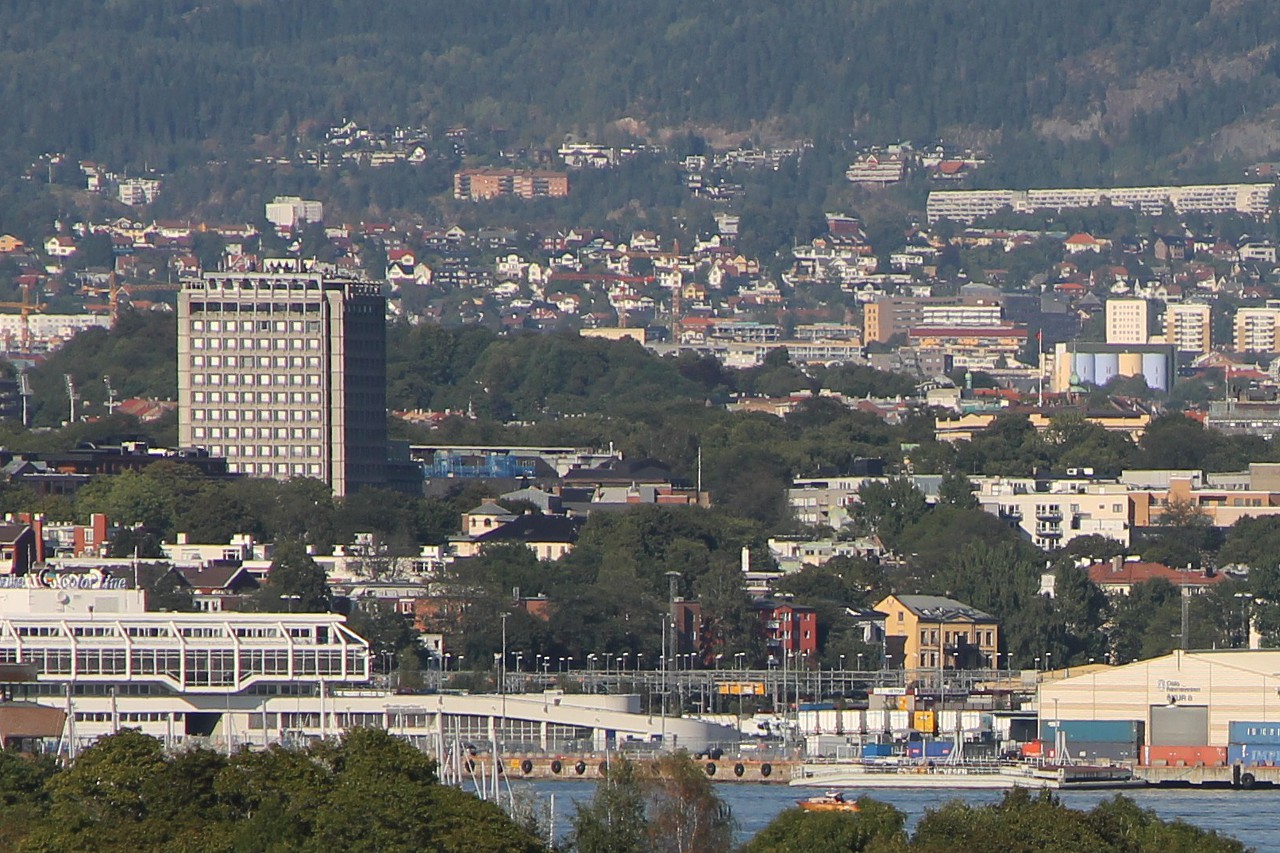
Frogner is a cozy low-rise area of Oslo, where there are many beautiful villas built in the 18th-19th century, as well as the world-famous Vigeland sculpture park. In the foreground is Bugdanes cape with a monument to the lost sailors.
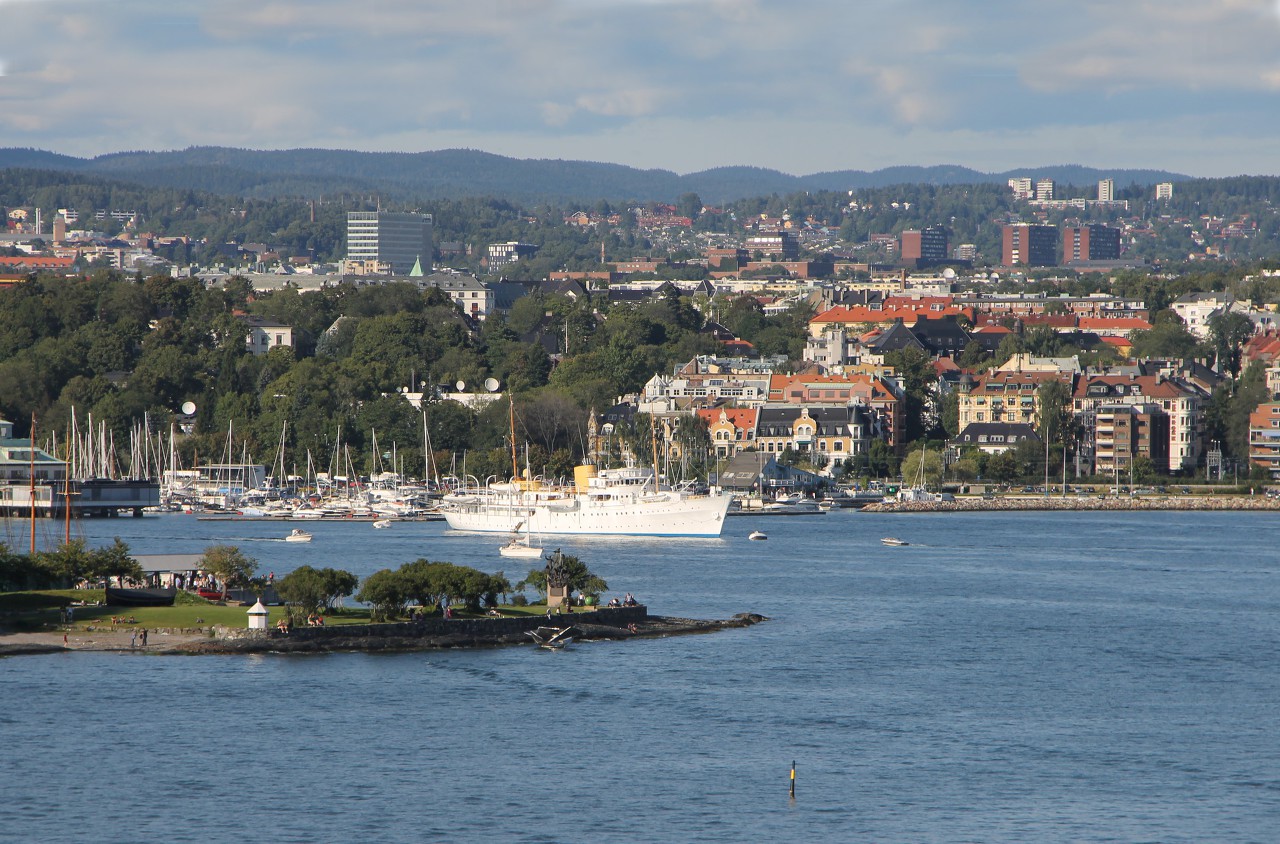
Another historic lighthouse, Dyna fyr, is located off the southern coast of Bygdøy peninsula. It was built in 1874, became electric in 1928, and automated in 1956 and the position of lighthouse keeper was abolished. In 1992, a banquet hall was opened in the lighthouse house. Here we will say goodbye to the Norwegian capital, but we still have a long way to go on the Oslo fjord.
